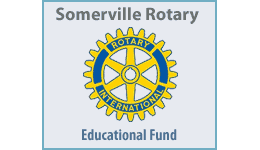Are You Hiding in Plain Sight?
By Franklin W. Liu
Art expressed as a clash of fashion. Blurring the distinction of deadly military combat pragmatism with whimsy civilian pop culture is a sprawling installation by Paris-based artist Thomas Hirschhorn. “Utopia, Utopia = One World, One War, One Army, One dress,” is a provocative exhibition currently at the Institute of Contemporary Art in Boston.
The Pentagon never dreamt that camouflage gear would become such a sought-after urban street-fashion, flaunting the expression of individuality frowned upon by the military.
To the military, camouflage serves only one macabre purpose: to enhance a soldier’s survival in battle, to kill the enemy another day.
To Thomas Hirschhorn, dystopia is not some imaginary, distant society. The degradation of current societal values laid the fascinating foundation for this thought-provoking installation art.
Hirschhorn (1957- ) is a Paris-based artist born in Bern, Switzerland. He studied at the Schule Fur Gestaltung in Zurich. Since 1987, his work has been widely exhibited in museums and galleries throughout Europe. In recent years, his note-worthy work has also been shown in Canada and the U.S., in New York, Chicago and Philadelphia.
Upon entering the threshold of ICA’s main exhibition space, one notices that camouflage-pattern tapes have been copiously applied to accentuate the corner edges of walls and at the fascia framing this gateway. Beyond it, one sees a room looking like a crammed Army-Navy store on steroids.
The viewer is immediately drawn into a chaotic, muscular world of endless, seamless patterns.
The entire volume of two floors of gallery space has transformed into one giant cocoon displaying artifacts. Mannequins were even suspended face down from above, as large jigsaw puzzle-shape pieces, connected by chain-links, were hung stretching from ceiling to floor as peculiar sign posts.
Viewers meander through a maze, flanked by items. Everywhere one turns to look, there are camouflage things, large and small, hidden in plain sight.
There is a mind-numbing array of clothing, clippings, magazine photos
of soldiers deployed in war zones contrasting with toys of Barbie dolls sitting in dollhouses next to G.I. Joes.
There are cigarette lighters, cups, caps, maps, backpacks and even two large, 15 feet long, 3 feet tall cardboard cigar shapes, taped and painted to resemble snub-nose missiles resting harmlessly on its belly.
Pictures of rappers in T-shirts, sporting camouflage caps backwards adorn covers of videos, tapes and music CDs.
In an area set to the side, an entire grouping of furniture of two sofas with seats and back cushions, a side chair, the coffee table, even the gallery’s exit-door frame, as well as the panic bar, were covered over by camouflage tape.
The accumulative result was a simultaneous explosion and implosion of the viewer’s senses.
Mannequins’ arms, heads, legs, torsos were perched on unpainted wood studs that were sawed, fanned out and nailed into tree branches. These were
displayed in five distinct clusters of exactly eight items each, spaced at intervals throughout the exhibit.
Why did Hirschhorn use a series of eight heads, then eight arms, eight legs, and eight torsos? Perhaps the answer lies in numerology.
In 1997, Time-Life Books, Inc. published “Mysteries of the Unknown.” In it, the essence of eight means reward. Eight also signifies being well grounded physically, emotionally, and mentally. The reward of past efforts comes in equal proportion to the wisdom of past choices; thus, eight reaps what the past has sown.
The glut of objects is all consuming, making it difficult to think clearly.
Instead, one ends up feeling viscerally what is there. There is little patience to read the text fragments written by philosopher Marcus Steinweg’s on war and life.
The text contains tedious words like: self-transgression, self-surpassing, de-subjectivation. Words one can’t read, oddly reinforce the central notion of this exhibit of things one can’t see.
Away from all the camouflage and once out on the sidewalk on Boylston Street, the power and the enormity of Hirschhorn’s message, nonetheless, continues to work magic.
Passing strangers, I observe what they wear. Familiar neighborhoods I frequent, somehow, feel exposed; everything is grounded in seeming clarity.
Hirshhorn does not send an anti-war message; he has assiduously excluded images of innocent humans in throes of agony, maimed from war.
The carnage is seen in the cathartic destruction and burning of military
hardware: Plastic toys of downed CH-46 transport helicopters, overturned Army cargo trucks, disabled Bradley armored vehicles and a sundry of
artillery, rocket launchers all strewn into a charred hill of twisted wreckage.
Herschhorn expects viewers to bring differing opinions on why mankind’s destiny is forged in warfare. His challenges viewers to ponder the trickle-down effect of military camouflage and the dissonant reasons on why pop cultural would embrace camouflage gear as street-fashion wear. What’s causing this lack of sensitivity, this disconnect in us?
Hirschhorn intends his work as a broad warning; a heads-up as grave an alarm as the one sounded by Andy Warhol on the pervasive impact of relentless consumerism on society.
ICA mounted this show to spark lively discussions and has hung a board reading, “Reaction Point” to capture viewer comments.
The board was filled with yellow Post-it notes, some say: “It was peculiar yet fascinating.” “Funny, ironic, humorous.” “Good examples, good juxtaposition.” And “Too much for one visit, I’ll be back again.”
Hirschhorn’s “Utopia, Utopia” is co-organized by the ICA and the
Wattis Institute for Contemporary Arts, San Francisco. The exhibit will be installed there for view starting March 15, 2006.

 https://www.portersquarebooks.com/
https://www.portersquarebooks.com/













Reader Comments